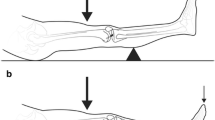Abstract
The aim of the present investigation was to test the Lysholm knee scoring scale from 1985 for sensitivity and reliability. Thirty-one patients with one of four different diagnoses: anterior cruciate ligament rupture (ACL), meniscus tear (MT), patello-femoral pain syndrome (PFPS) and lateral ankle sprain (LAS) participated in the study. None of the patients were in the acute phase of injury, and none had undergone surgery. Each patient was interviewed by telephone and gave answers to the Lysholm knee scoring scale verbally, while the interviewer wrote down their replies. This was done on three different occasions, days 1, 3 and 14. The results showed that the ACL group scored the highest (81.1 of possible 100 points) and differed significantly (P<0.01) from the other three groups. Thus, the Lysholm knee scoring scale was less sensitive for the ACL patients, for whom it was originally designed, than for the other three diagnostic categories. The reliability was highest between the two first testing times, days 1 and 3 (r=0.75,P<0.0001).
Similar content being viewed by others
References
Arnold JA, Coker TP, Heaton LM et al (1979) Natural history of anterior cruciate tears. Am J Sports Med 7:305
Bach BR Jr, Jones GT, Sweet FA, Hager CA (1994) Arthroscopy-assisted anterior cruciate ligament reconstruction using patella tendon substitution. Two-to-four year follow-up results. Am J Sports Med 22:758–767
Bloom MH (1989) Differentiating between meniscal and patellar pain. Phys Sports Med 7:95–108
Denti M, Monteleone M, Bernardi A, Arosio A (1994) Medial patellar synovial plica syndrome, the influence associated pathology on long-term results. Chir Degli Organi Movimento 79:273–277
Engström B (1993) Treatment of anterior cruciate ligament deficiency — with special emphasis on soccer injuries. Thesis, Karolinska Institute, Huddinge University Hospital, Stockholm, Sweden
Feagin JA Jr, Blake WP (1983) Post-operative evaluation and results recording in the anterior curciate ligament reconstructed knee. Clin Orthop 172:143
Greens S, Clayton ML, Liedholt JD et al (1974) One-hundred point scale for assessment of knee disability. In: Smillie I (ed) Diseases of the knee joint. Churchill Livingstone, Edinburgh, p. 28
International Knee Documentation Committee (ESSKA & AOSSM) (1991) Knee ligament standard evaluation form. Congress of the International Society of the Knee, Toronto, Canada
Jensen NC, Riis J, Robertson K, Holm AR (1994) Arthroscopic repair of the ruptured meniscus, one to 6.3 years follow-up. Arthroscopy 10:211–214
Kettelkamp D, Thompson C (1975) Development of aknee scoring scale. Clin Orthop 107:93–99
Knaepler H, Schenk C (1994) The new Marburg rehabilitation concept. On the status of exercise equipment within the scope of rehabilitation of patients after surgery of the anterior cruciate ligament. Akuel Traumatol 24:17–23
Kuhne JH, Jansson V, Hoppert M et al (1994) Ergebnisse der operativen Behandlung posterior Knieinstabilitäten. Unfallchirurg 97:151–158
Larson R (1974) Rating sheet for knee function. In: Smillie I (ed) Diseases of the knee joint. Churchill Livingstone, Edinburgh, pp 29–30
Lysholm J, Gillquist J (1982) Evaluation of knee ligament surgery results with special emphasis n use of a scoring scale. Am J Sports Med 10:150–154
Marshall KL, Fetto J, Botero P (1977) Knee ligament injuries. A standardised evaluation method. Clin Orthop 123: 115–129
Renström P, Kannus P (1994) Injuries of the foot and ankle. In: De Lee JC, Drez Jr D (eds) Orthopaedic sports medicine. Principles and practice. Saunders, Philadelphia, pp 1708–1710
Tegner Y (1985) Cruciate ligament injuries in the knee Evaluation and rehabilitation. Thesis, University of Linköping, Sweden
Tegner Y, Lysholm J (1985) Rating systems in the evaluation of knee ligament injuries. Clin Orthop 198:43–49
Tegner Y, Lysholm J, Lysholm M, Gillquist J (1986) Strengthening exercises for old cruciate ligament tears. Acta Orthop Scand 57:130–134
Tegner Y, Lysholm J, Odenstam M, Gillquist J (1988) Evaluation of cruciate ligament injuries. A review. Acta Orthop Scand 59:336–341
Turba JE, Walsh MW, McLeod WD (1979) Long term results of extensor mechanism reconstruction. A standard for evaluation. Am J Sports Med 7: 91–94
Vaatainen U, Kiviranta I, Jaroma H, Airaksinen I (1994) Lateral release in chondromalacia patellae using clinical, radiologic, electromyographic and muscle force testing evaluation. Arch Phys Med Rehabil 75:1127–1131
Werner S (1993) Patello-femoral pain syndrome — an experimental clinical investigation. Thesis, Karolinska Institute, Stockholm, Sweden
Author information
Authors and Affiliations
Rights and permissions
About this article
Cite this article
Bengtsson, J., Möllborg, J. & Werner, S. A study for testing the sensitivity and reliability of the Lysholm knee scoring scale. Knee Surg, Sports traumatol, Arthroscopy 4, 27–31 (1996). https://doi.org/10.1007/BF01565994
Received:
Accepted:
Issue Date:
DOI: https://doi.org/10.1007/BF01565994




